Loose doorknobs or handles are something all homeowners and businesses must deal with at some point. Whether the handle pulls away from the door or jiggles when trying to open it, it’s only a matter of time before it becomes a nuisance for your employees or customers. Fixing a loose doorknob that has completely fallen off is not too difficult.
Reasons Door knobs or Handles Become Loose.
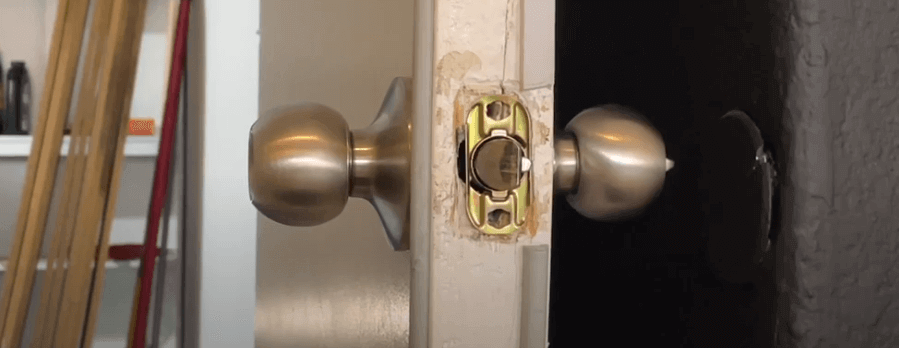
There are many reasons why a doorknob or door handle becomes loose. Some include:
- It becomes wobbly or loose over time and must be adjusted and tight again.
- It is aged and subjected to the buildup of dirt, dust, and other pollutants that hinder the handle or lock operation.
- It has a loose or missing screw in the door plate.
- The door handle’s locking mechanism might be malfunctioning.
Popular Types of Door Knobs
Fixing the doorknob or handle will depend on its design and how it’s secured to the door and spindle. The most common doorknob installations are:
- Exposed screws: Most doors have knobs with visible screws on the faceplate.
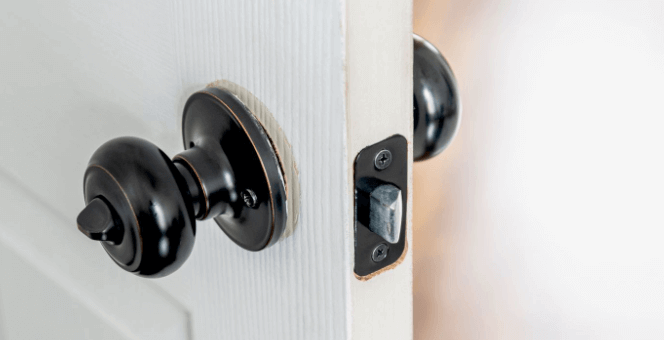
- Spring-loaded with hidden screws: The screws are hidden behind the faceplate with these doors. The knob is fastened to the spindle with a spring-loaded button known as a detent.
- Knob with a setscrew: The screws are hidden behind the faceplate while the knob is affixed to the lock system with a hexagonal-shaped setscrew.
- Kwikset knobs: These are less common. You’d need to remove the doorknob and twist out the faceplate to expose the long screw that passes through the spindle.
What will you need to Fix a Loose Door Knob or Handle?
Equipment / Tools
- Screwdriver (flathead or Phillips)
- Allen wrench (if needed)
- Paperclip or awl (if needed)
Materials
- Set screw (if needed)
Fixing the Loose Doorknob or Handle
Fortunately, fixing a loose handle or knob is not hard and can be done by following seven simple steps once you have determined the types of door knob or handle your company has.
How to Tighten a Loose Doorknob?
Step 1: Locate the Screws
When a door knob feels loose or wobbly or spins freely on the spindle, the problem is typically caused by a set screw that has come loose from the spindle or the internal screws that secure one side of the knob to the other through the door.
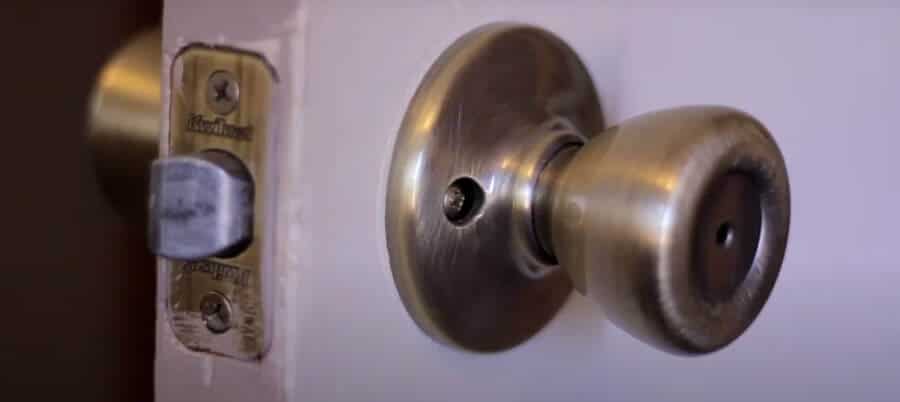
The location of the screws can vary, depending on the type of door knob, so you may find the screws by simply looking at the faceplate, but if the door knob doesn’t have visible screws, you will need to find the detent hole or pin.
The detent hole or pin is usually on the side of the doorknob, while you can find the set screw on the bottom. Loosen the set screw and insert a flathead screwdriver or the end of a small Allen wrench into the detent hole to push down on the pin and release the door handle. Use a screwdriver to pry up the base to reveal the screws.
Step 2: Inspect the Screws
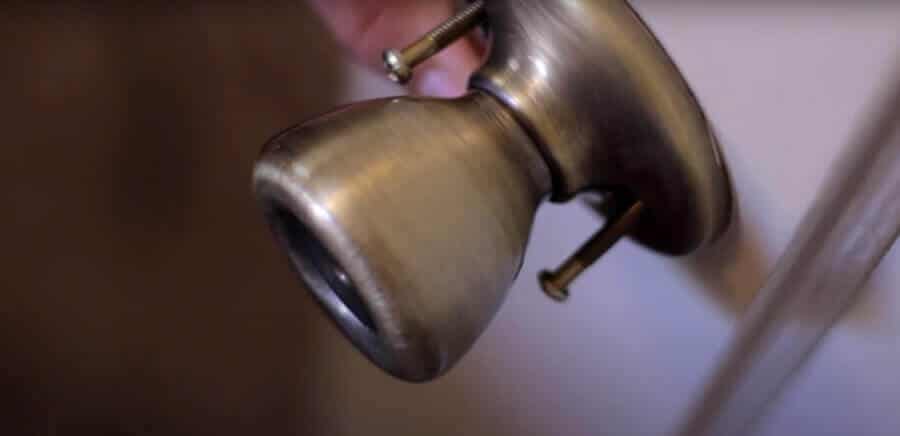
If the screws are installed directly through the faceplate of the door, then removing them and inspecting each screw should be relatively easy. Loosen the screws and take them out of the door so you can inspect the shank, thread, and tip for any defects. Ensure you keep a hand on the doorknob to prevent it from falling to the ground when the screws are removed.
For screws that were concealed behind the faceplate, removing the doorknob and base will take a little extra effort to access the screws, but once the screws are exposed, the basic steps in the installation process are the same.
Loosen the screws so you can inspect each part, including the shank, threads, and tip. Look for dents, warping, damaged threads, or signs of rust or corrosion that could indicate the screws need to be replaced.
Head to a local home improvement store to pick up replacement screws if necessary. Taking the old screws with you ensures you find the right size and length for your door knob.
Step 3: Remove the Knob or Handle
Exposed screws
If exposed screws are being used, you will have to find the set screw, normally found on the inside of the door. Using either a screwdriver or Allen key, loosen the set screw and remove the handle, which will uncover the shaft.
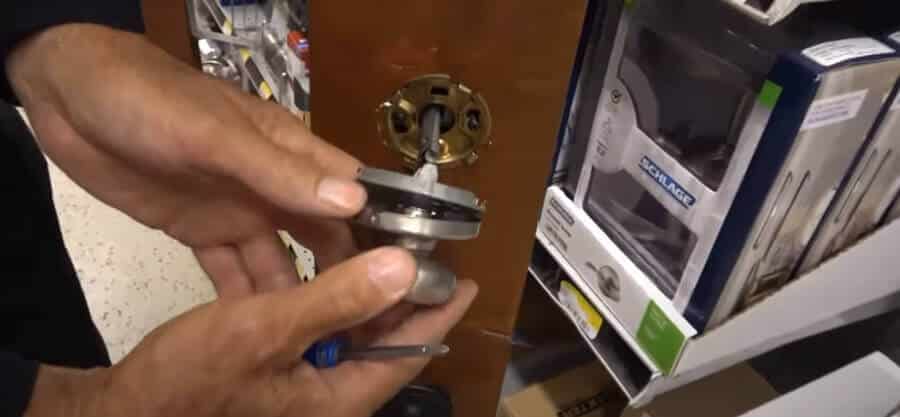
If it is a threaded shaft, you must twist its handle to flush it with the door. Provide a little space for the knob to spin correctly by backing it up. Then tighten up the set screw.
For an unthreaded shaft, you can easily set the knob or handle back on the shaft and up to the door face before you tighten the set screw down.
Hidden Screws
To display the hidden screws, you must determine where the detent access hole is when looking at the knob. The detent is a spring-activated pin that sticks out of the little hole in the knob, preventing it from rotating.
When you locate the pin, press down on the pin using a flathead screwdriver and remove the handle from the spindle shaft.
Step 4: Remove the Base
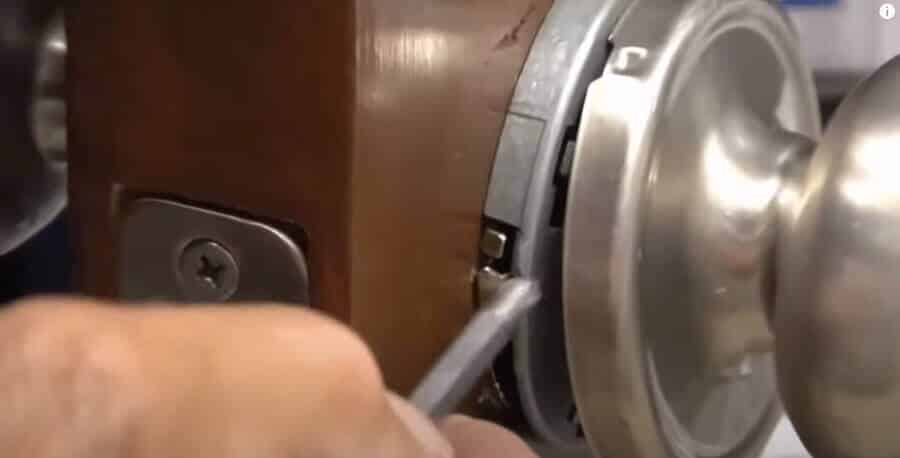
Remove the base after you have separated the doorknob from the spindle shaft. Carefully pry the ring loose slowly using a flathead screwdriver and avoid damaging the backing plate since it could destroy the whole lockset.
Step 5: Realign the Door Knob
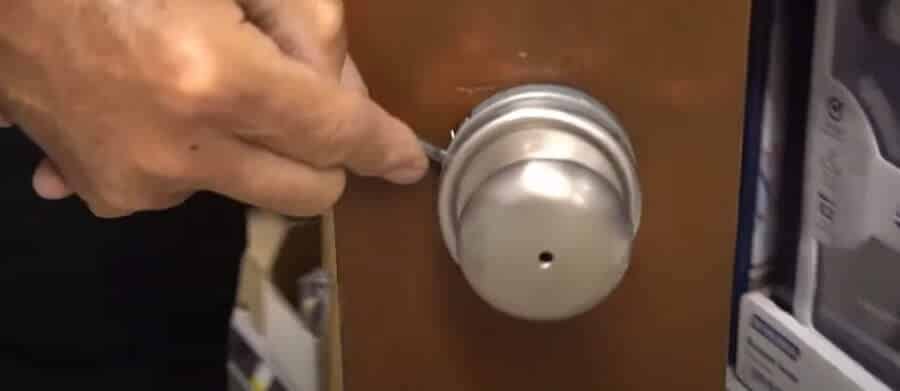
When you have removed the door knob from the door, this will leave the hole in the door exposed, allowing you to inspect the door and door knob to identify any problems with the current assembly. A common issue that can cause the door knob to loosen over time and increase the wear and tear on the screws is a simple misalignment problem.
If the door knob assembly has been installed at a slight angle, causing uneven wear on the door and the doorknob. Adjust the angle so the door knob assembly is level and properly aligned with the door and faceplate.
Step 6: Find the Screws and Tighten
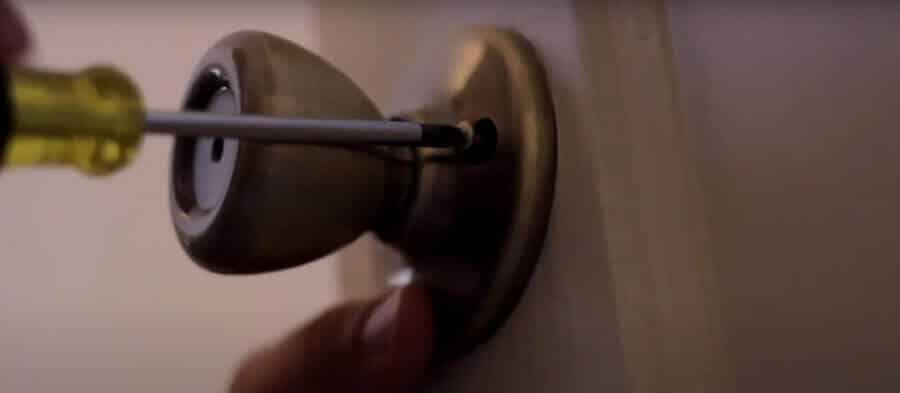
After you have removed the ring successfully, you should be able to see the set of screws. They run through the door from the inside backing plate into the outside backing plate, which holds the whole assembly together.
Holding the outside backing plate to keep it from moving, tighten each screw separately.
Step 7: Restore the Base and Put the Handle Back On

Snap the ring back on the backing plate. You can now put the handle back over the spindle shaft. Once completely on the spindle shaft, turn the handle to line the holes up with the detent and click into place.
Extended Tips On How To Tighten A Door Knob
Below are additional recommendations for door lock maintenance and other smart things you can do to make this project a success:
Lubricate Your Lockset
Now that you have disassembled the knob system, this is a good time to lubricate the inner parts, including the spindle, screws, and backplate. Spray a tiny amount of silicone-based lubricant to keep the rust away and prolong the life of your door lockset.
Repair The Set Screw Using A Thread Locker
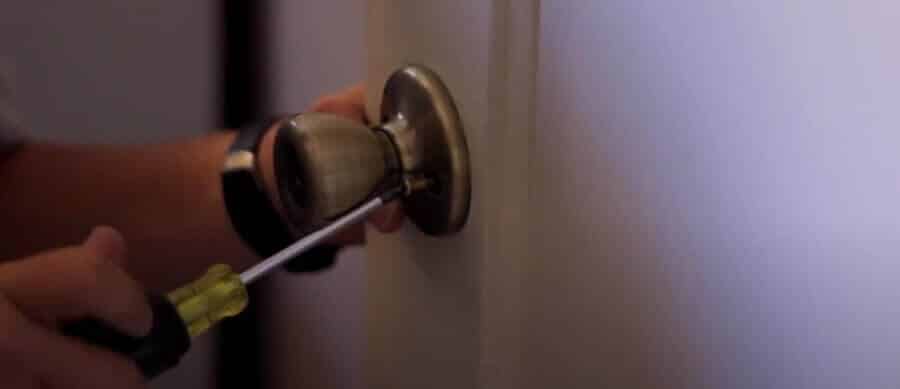
Sometimes, the set screw might come loose again quickly after tightening it, causing the knob to spin on the spindle. If this is the case, it is likely that the threads on the setscrew have lost their grip and cannot keep the knob firmly secured to the spindle.
Try applying a medium-strength thread locker on the set screw to resolve this. The thread locker will increase the setscrew’s grip, ensuring the knob firmly attaches to the spindle and is not wobbly. You can buy a tube of thread locker from your local hardware store.
When applying the thread locker to the setscrew, the tip should not touch the setscrew.
Replace The Screws Where Possible
As you have seen, loose screws usually cause a wobbly doorknob. Rust and age can break or wear out the screws, requiring replacing them.
Inspect the mounting screws and setscrew—if they are lost or damaged, your best bet is to replace them. For a lost or damaged set screw, remove the knob and take it to the hardware store to buy the right fit replacement. If the mounting screws are broken or worn out, bring one of them to the store to buy the right size.
Quickly Repair A Loose Doorknob On Your Own And Save Money
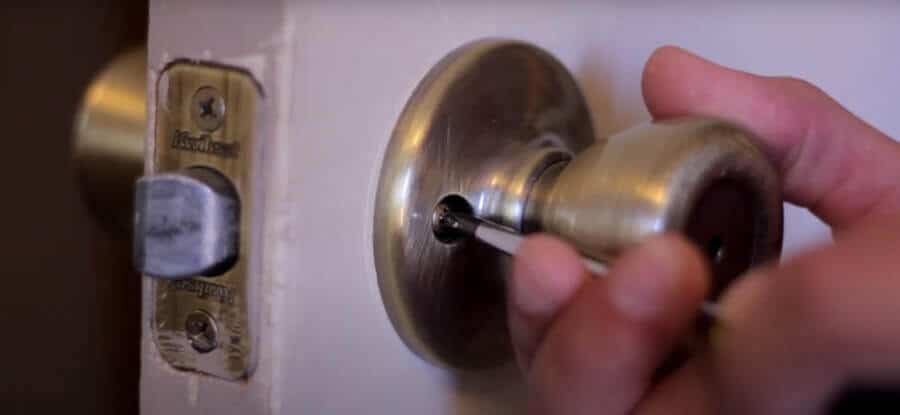
When your doorknob starts to rattle, it can be difficult to determine the cause, especially on lock systems without visible screws.
But, as we’ve shown you, the culprit is usually loose screws on the doorknob itself or the hidden backplate that holds the lockset together.
Once you locate the screws, it is just a matter of tightening them up, and your once jiggly knob will be as good as new.
Do you have any questions or comments on fixing doorknob problems? Please leave them below—we’d be happy to hear from you!

